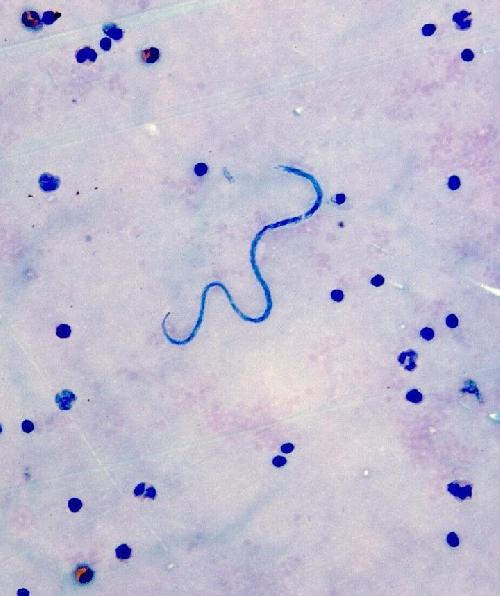Infection with the nematode parasite Mansonella perstans is one of the most neglected of the neglected tropical diseases. Although symptoms are usually mild, the infection can cause swelling, fever, headaches and abdominal pain and an optimal treatment has not yet been determined. The parasite is transmitted by biting midges found in many areas of sub-Saharan Africa however the exact species of the vector is unknown. A team of researchers from the University of Copenhagen, the Swiss Tropical and Public Health Institute and Uganda Ministry of Health, used data from a survey of 76 schools across Uganda to model areas of high risk of M. perstans infection and examine its overlap with other common parasitic infections. This study will be published in PLOS Neglected Tropical Diseases.
Between 2000 and 2003 a national survey gathered blood-samples from 12,207 pupils aged 5-19 years old across 76 schools in Uganda. The survey tested for the presence of three common parasitic infections: M. perstans, Wuchereria bancrofti (the causative agent of lymphatic filariasis) and Plasmodium (the parasite responsible for Malaria). M. perstans infections were observed in 62% of the schools, with prevalence ranging from 0.4% to 73%. Co-infection with W. bancrofti was found in 0.3% of pupils and co-infection with Plasmodium in 3%. Only 9 pupils were recorded as infected with all three species.
The researchers examined a range of bioclimatic factors to see which were associated with increased levels of M. perstans infection. Of the different types of vegetation (forest cover, open vegetation and cropland) only forest had a significant positive association with infection. A significant positive association was also found with a high density of cattle, although not with other livestock such as sheep, goat, pig or chicken. A significant negative association was found with land surface temperature. These results suggest that infection is associated with cooler or forested areas with reduced temperature variation, and areas with high densities of farmed cattle. Older students were found to be at a significantly higher risk of infection and positive associations were found with W. bancrofti infection in areas where the parasites overlapped.
 This is a photograph of Mansonella perstans microfilariae in a blood smear. Credit: Paul Erik Simonsen
This is a photograph of Mansonella perstans microfilariae in a blood smear. Credit: Paul Erik Simonsen
Bayesian multivariate regression analysis was used to build up predictive risk map for M. perstans across Uganda. High risk of infection was predicted for the central area, with pockets of increased risk in the north-west and south-east. Low risk was predicted in the north-eastern and central south regions. "Although this predictive risk map is a model, and the data is based on schoolchildren only, it does provide a deeper understanding of the zoogeographical patterns of this highly neglected disease and may be useful for targeting areas for surveillance and measuring elimination progress", says lead author and assistant professor Anna-Sofie Stensgaard, from the Center for Macroecology, Evolution and Climate, University of Copenhagen. "It amazes me how little we know about this relatively widespread parasite, but this study has provided some valuable clues as to the ecology of both the parasite and the as yet unidentified species of insect vector in Uganda", concludes Anna-Sofie Stensgaard.
source: PLOS